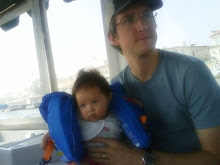Blendkit 2016
Introduction
I have recently started the Blendkit 2016 five week online massive online open course (MOOC) offered from the University of Central Florida via Canvas. It will guide learners through the design process for a blended learning course that we design. I have also opted for the portfolio review option where expert instructional designers will review and critique my blended learning design and created course content. I feel it will be a valuable experience, that will provide experience in instructional design, and confidence in creating and displaying content online, as well as rekindling my online participation via blog and Twitter.
Week 1 Response
The first chapter of the Blendkit reading offered a definition of blended learning, as a balance of face-to-face (f2f) instruction and web-based online instruction, as well as two approaches to the design process. The balance between f2f and online is defined by the instructors teaching philosophy, the course objectives and learners' needs and level of comfort with the various forms of instruction.
The form of blended learning that I will be designing this semester will be a "flipped classroom" approach to my freshmen practical English course offered at Yeungnam University in Daegu, South Korea. A flipped classroom can roughly be defined where the lecture aspect of the classroom is moved online via instructional videos, and the homework, project work is moved in to the classroom so that the teacher can be available for students who are struggling with implementing concepts outlined in the lectures.
This course was traditionally focused on the four skills of reading, writing, listening, and speaking. It was supported by the Q Skills for Success series from Oxford University Press, which offers two books divided by reading and writing, and listening and speaking. To determine what to move online we looked at the passive parts of the classroom, where students were not interacting with the instructor or each other. Generally those activities were listening and reading, so we decided to move those online and created quizzes to assess students' understanding of this content. This was thought to allow students to proceed at their own rate, review content as much as needed, and increase opportunities for them to practice and produce the target language in class.
There are several things I would like to respond to from the first reading. First, design: I have taught this course traditionally for several years now. Therefore I have clearly defined the learning objectives and the assessments. When designing a blended learning do you have to go back to the start and totally redefine the course. "Blended learning is not simply adding an online component to a face-to-face course." I think as long as the online content is connected to the activities done within the class in our case speaking activities and writing practice, and the students clearly understand how they are related then you have the potential for a good course. But what is counseled regularly is to start small, then add content based on personal reflection and responses from the learners.
Second, learner experience: learner-defined vs. instructor-designed. The reading advocates to some extent for a flexible learning design, in that the students have opportunities to pursue learning avenues that interest them. To me this is a nice ideal, but in my experience with South Korean learners who have little experience with learner autonomy this would be very challenging. I think clear activities that need to be accomplished in a set manner are what they are used to and will feel comfortable with. We plan to offer optional extension activities, related videos that they can watch and comment on for example.
Finally, instructor roles: mentioned in the first case study: McCracken and Dobson's broad conceptualization, was a team taught course. I think there is great potential in this situation, but only if the roles of the instructors in regard to design and management of online content is clearly defined. With many LMSs there are collaborative tools. My colleague is more interested in mining existing content that can be used in our courses and designing online assessment, and I am more interested in learning development tools to create tutorials and educational videos for our learners. We can share what we created and choose appropriate materials for our own individual course goals.
In conclusion, this design will be an iterative process. Units will be designed about two weeks before the students engage with the content. I look forward to learning how elements of blended learning design theory presented and experienced in this course will inform this ongoing process.




No comments:
Post a Comment